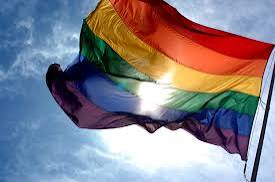Some people choose to label their sexualities and genders, and some people don’t. Either way is fine, but this might clear up some of the confusion around this topic, as I know there are a lot more terms now – only 30 years ago, people thought there was just straight and gay. Education is never a bad thing, especially if it can help people to understand and respect people better. 🙂 think of this as an encyclopedia of the main sexualities and genders, which you can refer back to any time you are confused.
Sexuality
Sexuality is who we are sexually attracted to; who we want to be sexual with. It is completely unrelated to someone’s gender, and is not something you choose.
These are the main sexualities:
Heterosexual – attracted to the opposite sex, e.g. *cisgender or **transgender males attracted to females, cisgender or transgender females attracted to males.
Homosexual – attracted to the same sex.
Bisexual – attracted to 2 genders, usually men and women, but could also mean a person attracted to men and nonbinary people, for example.
Polysexual – attracted to more than 2 genders.
Pansexual – attracted to any gender and/or is attracted to a person’s personality as opposed to their genitals.
Heteroflexible – mostly heterosexual, but with homosexual tendencies.
Homoflexible – mostly homosexual, but with heterosexual tendencies.
Asexual – does not experience sexual attraction but may still experience romantic attraction. Some asexuals experience some sexual attraction but some experience none.
Queer – although previously (and arguably still) an offensive term, the LGBTQ+ community has now embraced the term to represent anyone who is not straight or cisgender.
Androsexual – attracted to males (usually used by gender queer*** people, as the terms hetero/homo/bisexual do not apply to them).
Gynosexual – attracted to females (usually used by gender queer people).
The Kinsey Scale
All the different terms we have are good and all, but sexuality is a spectrum and everyone falls at a different point on it. Therefore, Alfred Kinsey created a scale that better explained people’s sexualities:
Rating | Description
0 | Exclusively heterosexual
1 | Predominantly heterosexual, only occasionally homosexual
2 | Predominantly heterosexual, but more than occasionally homosexual
3 | Equally heterosexual and homosexual
4 | Predominantly homosexual, but more than occasionally heterosexual
5 | Predominantly homosexual, only occasionally heterosexual
6 | Exclusively homosexual
X | No socio-sexual contacts or reactions
The Kinsey Scale is not perfect, therefore other scientists like Klein have expanded it to include level and type of attraction (sexual/romantic), past actions, fantasies and emotional bonds like friendships. Nevertheless, it is a good start to understanding sexuality.
Sexual Attraction Vs Romantic Attraction
Who you are sexually attracted to may not always be the same as who you are romantically attracted to; or you might not experience attraction at all! Thus, you can be a bisexual homoromantic (sexually attracted to 2 genders but romantically attracted to the opposite gender only) or an asexual panromantic (not attracted to anyone sexually, but can be attracted to any gender romantically) or any combination of these.
Heteromantic – romantically attracted to the opposite sex
Homoromantic – romantically attracted to the same sex
Aromantic – (generally) does not experience romantic attraction.
Biromantic – romantically attracted to 2 genders
Polyromantic – romantically attracted to more than 2 genders, but not all genders.
Panromantic – romantically attracted to any/all genders or is attracted to personality over genitals.
Gender
Here are some terms you might hear:
*Cisgender – identifies as the gender they were assigned at birth; for example, has female sex organs and identifies as a female.
**Transgender – does not identify with the gender they were assigned at birth e.g. was born with male sex organs but identifies as a woman.
Transsexual – sometimes used interchangeably with ‘transgender’, a transsexual is a person who has undergone hormone treatment and surgery to attain the physical characteristics of the opposite sex.
Genderfluid – someone who has no fixed gender; they either always feel a mix of male and female or feel like a different gender from day to day.
Nonbinary/gender queer – someone who has any gender outside of the traditional binary male and female genders. They may:
- Feel a mix of male and female
- Have an identity somewhere between male and female
- Have a culturally specific gender
- Have multiple gender identities
- Be gender neutral***
- Have an unrecognised gender
- Be intersex or transgender
- Have a weak or partial commotion to a gender identity
- Be Genderfluid.
***Gender neutral – neither male nor female.
Agender – someone who has no gender.
Androgynous – someone who has the characteristics or nature of both male and female OR neither specifically feminine nor masculine.
Intersex – born with male and female sex organs.
Some people may like wearing clothes usually worn by the opposite sex (e.g. men wearing heels/makeup/dresses), but this does not necessarily mean that they want to become the opposite sex or that they are gay. Lots of drag queens are actually straight men.
Overall, if you are unsure of someone’s gender, just ask them what their pronouns are and as long as you are respectful, it should be fine. Don’t worry if you accidentally use the incorrect pronouns for someone.
If you are interested in learning more about sex and relationships, I highly recommend the book Doing It by Hannah Witton; or, if you want to learn more about the queer community (or just prefer TV to reading), I recommend the show Queer Britain, which is on BBC 3.
Also, feel free to comment suggestions on blog posts you would like me to write. 🙂

Leave a comment